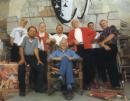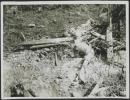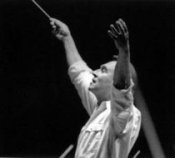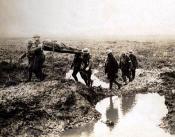Contributed by Dq82 - 2016/6/20 - 16:22
×
![]()
Note for non-Italian users: Sorry, though the interface of this website is translated into English, most commentaries and biographies are in Italian and/or in other languages like French, German, Spanish, Russian etc.









Though slighter in stature than their more substantial orchestral forebears, these two beautifully crafted movements have a special poignancy and intimacy in the composer’s slender output in that they communicate something of Coles’s war experiences. ‘Estaminet de Carrefour’ (‘coffee-house, or tavern, at the crossroads’) provides a sketch of a northern French pastoral landscape, away from the horrors of the front. This is depicted in the outer sections where the amiable melodic material and its accompanying drone (or musette) is evocative of the folk music of Normandy, while the waltz of the trio suggests a more civilized, refined ‘Edwardian’ environment, perhaps of a dance in dress uniform in the local town. The ‘Cortège’, on the other hand, provides us with a heroic picture of a military funeral procession, one of many that Coles no doubt witnessed in the three years he spent in the trenches. Its most haunting significance, however, is that it also movingly symbolizes the composer’s own ultimate sacrifice in April 1918 when he joined that ‘roll of honour’ of young musicians—George Butterworth, W C Denis Browne, and Ernest Farrar—whose talent remained unfulfilled.